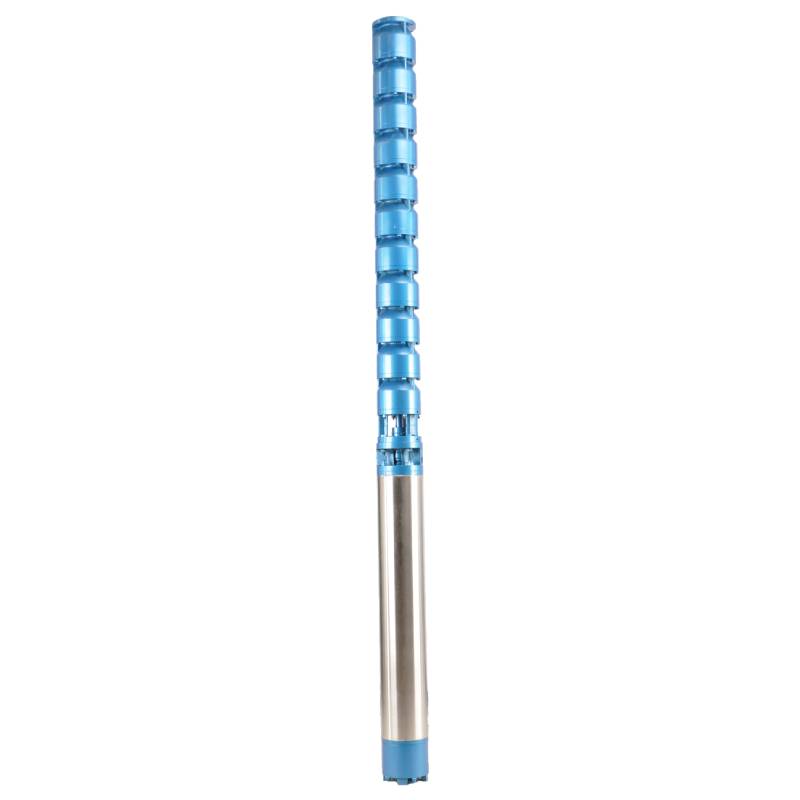Dec . 05, 2024 20:50 Back to list
Determining the Minimum Diameter for Submersible Well Pumps Available on the Market
The Smallest Diameter Submersible Well Pump An Overview
Submersible well pumps are essential components in water extraction systems, particularly in agricultural, residential, and industrial applications. They are designed to operate submerged underwater, effectively lifting water from deep wells to the surface. One of the crucial factors in selecting a submersible pump is its diameter, especially when considering installations in narrow well casings. This article explores the smallest diameter submersible well pumps available in the market, their features, and their applications.
Definition and Functionality
Submersible well pumps work by converting electrical energy into hydraulic energy. They consist of a sealed motor and a pump body, designed to be submerged in the fluid being pumped. The motor drives a series of impellers that push water to the surface. These pumps are often preferred over surface pumps for deeper wells, as they are more efficient and less prone to issues like cavitation and air locking.
Size Matters Why Diameter is Important
The diameter of a submersible pump is crucial for several reasons
1. Well Casing Compatibility Not all wells are created equal. Many older wells are dug with narrow casings, which limit the size of the pump that can be installed. The smallest diameter pumps are specifically designed for these situations, ensuring that water can still be extracted even from constrained spaces.
2. Flow Rate and Efficiency Smaller pumps may not be suitable for high-volume applications. However, they can be highly efficient in residential settings or smaller operations where the demand for water is low.
3. Ease of Installation A smaller diameter pump is typically easier to handle and install, which can be beneficial during maintenance or replacement procedures.
The Smallest Available Submersible Well Pumps
what is the smallest diameter submersible well pump

Currently, some of the smallest submersible well pumps available are approximately 2 inches in diameter. These pumps are ideal for use in well casings that have limited space, such as those found in residential applications or certain types of deep well installations. Various manufacturers produce submersible pumps that meet these size specifications, including brands known for durability and reliability.
For example, there are 2-inch submersible pumps designed for flow rates ranging from 4 to 10 gallons per minute (GPM). These pumps often feature stainless steel construction for corrosion resistance and longevity. Their compact size does not compromise the efficiency of water delivery, making them suitable for both domestic water systems and irrigation.
Applications
The applications for smaller diameter submersible pumps vary widely
- Residential Use For homeowners with deep wells, a small diameter submersible pump can effectively supply potable water. These pumps are particularly useful in rural areas where municipal water supply is not available.
- Irrigation Systems Farmers and gardeners often use these pumps to provide reliable irrigation from existing wells, ensuring that crops receive adequate water supply without the need for extensive installation.
- Groundwater Remediation In environmental applications, small submersible pumps are crucial for extracting contaminated groundwater, making it easier to remediate sites.
- Geothermal Heating and Cooling These pumps can also support geothermal systems that require water circulation within narrow boreholes.
Conclusion
When selecting a submersible well pump, the diameter is a crucial consideration that significantly affects compatibility, efficiency, and application suitability. The market offers a variety of small diameter pumps, especially in the 2-inch category, tailored for specialized installations. As technology advances, these pumps continue to evolve, providing more effective and efficient solutions for a wide range of applications. Whether for domestic, agricultural, or environmental purposes, the options available ensure that users can find the right pump that meets their specific needs while adhering to the constraints of their well infrastructure.
-
Submersible Water Pump: The Efficient 'Power Pioneer' of the Underwater World
NewsJul.01,2025
-
Submersible Pond Pump: The Hidden Guardian of Water Landscape Ecology
NewsJul.01,2025
-
Stainless Well Pump: A Reliable and Durable Pumping Main Force
NewsJul.01,2025
-
Stainless Steel Submersible Pump: An Efficient and Versatile Tool for Underwater Operations
NewsJul.01,2025
-
Deep Well Submersible Pump: An Efficient 'Sucker' of Groundwater Sources
NewsJul.01,2025
-
Deep Water Well Pump: An Efficient 'Sucker' of Groundwater Sources
NewsJul.01,2025
-
 Submersible Water Pump: The Efficient 'Power Pioneer' of the Underwater WorldIn the field of hydraulic equipment, the Submersible Water Pump has become the core equipment for underwater operations and water resource transportation due to its unique design and excellent performance.Detail
Submersible Water Pump: The Efficient 'Power Pioneer' of the Underwater WorldIn the field of hydraulic equipment, the Submersible Water Pump has become the core equipment for underwater operations and water resource transportation due to its unique design and excellent performance.Detail -
 Submersible Pond Pump: The Hidden Guardian of Water Landscape EcologyIn courtyard landscapes, ecological ponds, and even small-scale water conservancy projects, there is a silent yet indispensable equipment - the Submersible Pond Pump.Detail
Submersible Pond Pump: The Hidden Guardian of Water Landscape EcologyIn courtyard landscapes, ecological ponds, and even small-scale water conservancy projects, there is a silent yet indispensable equipment - the Submersible Pond Pump.Detail -
 Stainless Well Pump: A Reliable and Durable Pumping Main ForceIn the field of water resource transportation, Stainless Well Pump has become the core equipment for various pumping scenarios with its excellent performance and reliable quality.Detail
Stainless Well Pump: A Reliable and Durable Pumping Main ForceIn the field of water resource transportation, Stainless Well Pump has become the core equipment for various pumping scenarios with its excellent performance and reliable quality.Detail
